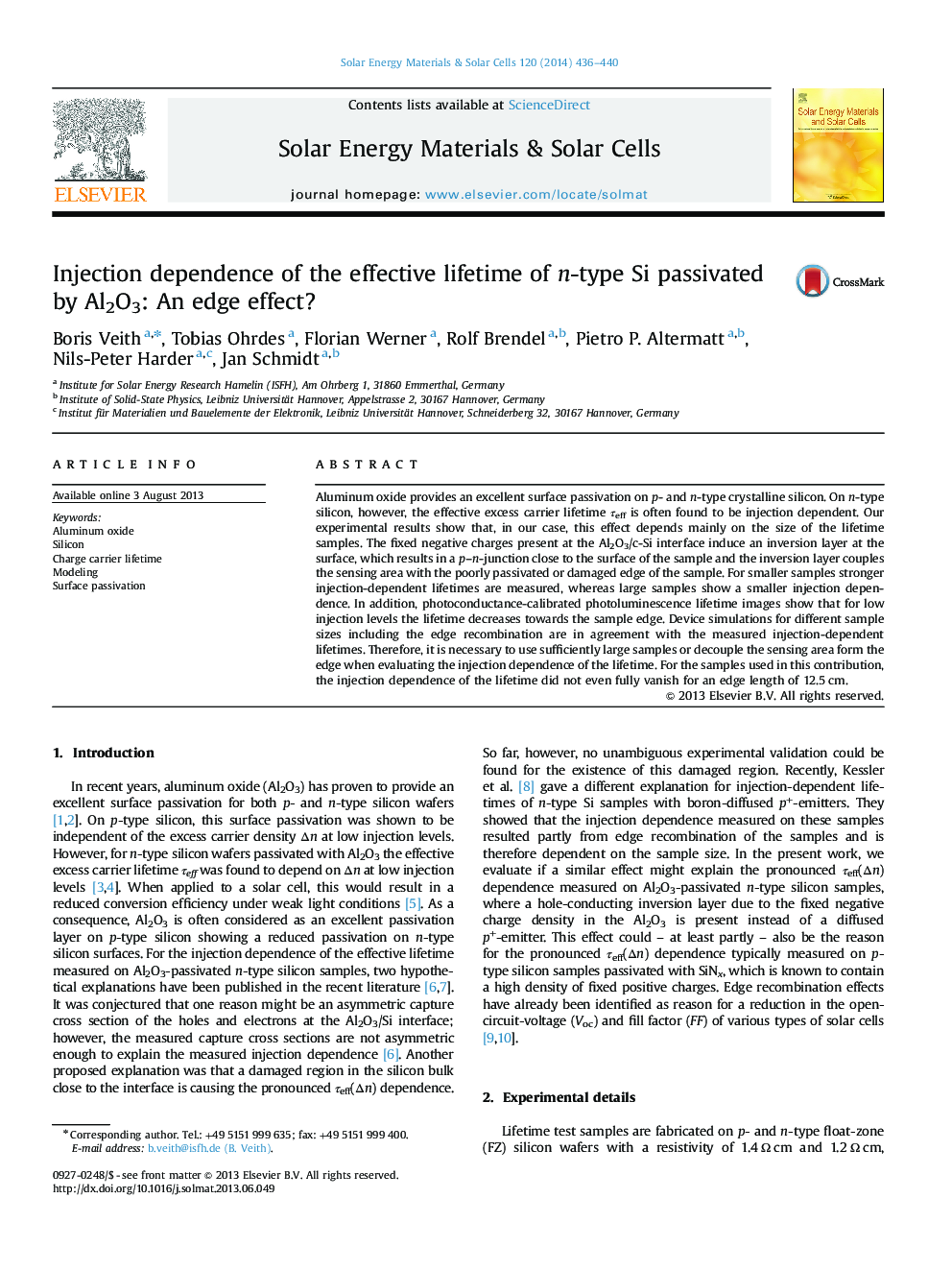| Article ID | Journal | Published Year | Pages | File Type |
|---|---|---|---|---|
| 10248775 | Solar Energy Materials and Solar Cells | 2014 | 5 Pages |
Abstract
Aluminum oxide provides an excellent surface passivation on p- and n-type crystalline silicon. On n-type silicon, however, the effective excess carrier lifetime Ïeff is often found to be injection dependent. Our experimental results show that, in our case, this effect depends mainly on the size of the lifetime samples. The fixed negative charges present at the Al2O3/c-Si interface induce an inversion layer at the surface, which results in a p-n-junction close to the surface of the sample and the inversion layer couples the sensing area with the poorly passivated or damaged edge of the sample. For smaller samples stronger injection-dependent lifetimes are measured, whereas large samples show a smaller injection dependence. In addition, photoconductance-calibrated photoluminescence lifetime images show that for low injection levels the lifetime decreases towards the sample edge. Device simulations for different sample sizes including the edge recombination are in agreement with the measured injection-dependent lifetimes. Therefore, it is necessary to use sufficiently large samples or decouple the sensing area form the edge when evaluating the injection dependence of the lifetime. For the samples used in this contribution, the injection dependence of the lifetime did not even fully vanish for an edge length of 12.5Â cm.
Related Topics
Physical Sciences and Engineering
Chemical Engineering
Catalysis
Authors
Boris Veith, Tobias Ohrdes, Florian Werner, Rolf Brendel, Pietro P. Altermatt, Nils-Peter Harder, Jan Schmidt,
